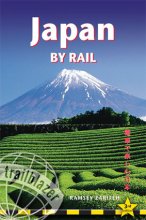Japan's Bullet Trains have been connecting its major cities since 1964 with an ultra high speed service that ranks as one of the world's best rail journeys. Known in Japan as the Shinkansen, the most famous route is the Tokaido line which connects the capital of Tokyo with the ancient city of Kyoto, the spiritual heart of Japan, via the cities of Yokohama and Nagoya. Travelling at speeds up to 274km per hour, the whole journey of 515km is made in as little as two and a quarter hours on the fastest service. Contrasting with the futuristic rail technology is the spectacular natural scenery that can be viewed on route, including the snow-capped peak of Mount Fuji and the Fuji-Hakone-Izu National Park, the paddy fields and woodlands of the Nobi Plain and the coastline of Lake Biwa, Japan's largest freshwater lake. The natural landscapes are enhanced in March and April during the cherry blossom bloom. There are three types of trains on this line - the Nozomi stops only at the major stations, the Hikari stops at some intermediate stations whilst the Kodama is the all-stop service, and you can choose between the ordinary and premium (green) classes.
Location:
 Japan
Japan
| Tokyo | |
|---|---|
Tokyo is one of the most modern, energetic and exciting cities in the world and yet still retains certain aspects of traditional Japanese culture. A huge metropolis, it's estimated that one-quarter of Japan's population live within 50km of the city centre. The Imperial Palace, home of the Emperor, is in the centre of town but is closed to visitors. However you can glimpse the Nijubashi (double bridge), moat and some of the palace buildings through the trees. Senso-ji Temple, in Asakusa, and the Meiji Shrine are examples of Japanese religious buildings that attract many pilgrims. Shopping is one of the major pastimes in Tokyo - Ueno Ameyoko Street is a traditional Tokyo street market while the department stores of Ginza sell all the latest fashions and electronic goods. At night, you can catch some traditional Kabuki theatre or check out the clubbing region of Shinjuku. | |
Travel to Bullet Train
Organised group tours: Click here to see 17 tours to Japan which may include Bullet Train.
Further Exploration for Bullet Train



 Rail Journeys Japan by Rail Sep 2012 (3rd ed.) 512 pages |




